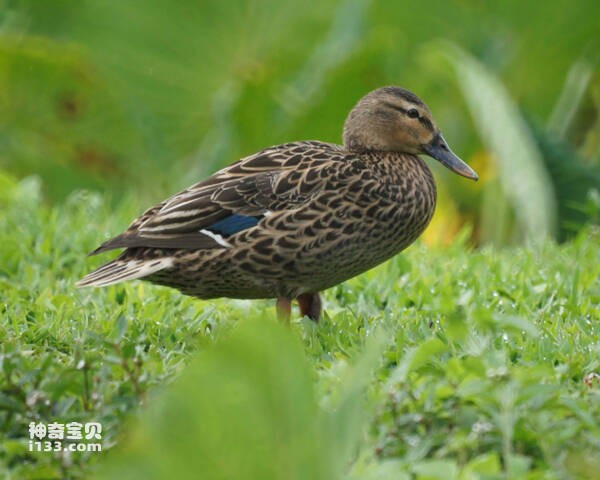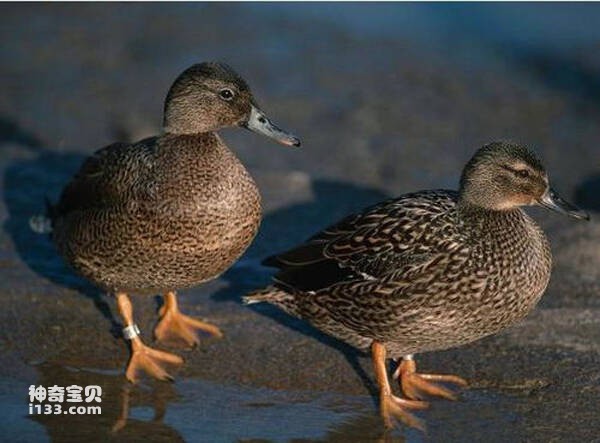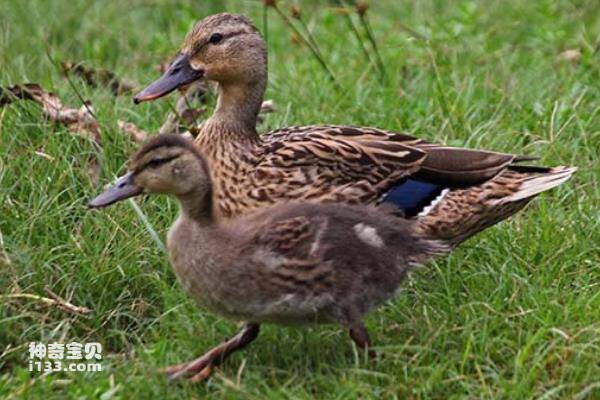Anas wyvilliana
IUCN
LCBasic Information
Scientific classification
- name:Anas wyvilliana
- Scientific Name:Anas wyvilliana,Hawaiian Duck,Koloa
- Outline:Waterfowl
- Family:
Vital signs
- length:40-50cm
- Weight:460-604g
- lifetime:No textual research information is available
Feature
It is a timid and mysterious medium-sized teal
Distribution and Habitat
It lives mainly in the Hawaiian Islands, and is found only on the islands of Kauai, Niihau, and the largest U.S. National Wildlife Refuge on the Hawaiian island of Kauai. Captive-raised Hawaiian ducks were relocated to the islands of Hawaii or Oahu and Maui, but there was a very high rate of interbreeding and interbreeding between Hawaiian ducks and mallards on all three islands.
It inhabits tall wetland grasses and streams near Kola Volcano on the main island of Hawaii. It lives in wetlands and the hottest coastal areas, with habitats up to 3,300 meters above sea level, including suitable ponds and mountains. These include lowland wetlands, river valleys, coastal ponds, lakes, swamps, flooded grasslands, mountain streams and artificial ponds, and occasionally swamp forests.
Appearance
Hawaiian ducks weigh 460-604 grams, are 40-50 cm long, and have a wingspan of 81-98 cm. It was once considered an island subspecies of mallard. It is a timid and mysterious medium-sized teal. Although similar in appearance to the common mallard duck, it is genetically different and behaves differently. Hawaiian ducks are smaller, with both sexes having mottled brown overall plumage; males are usually larger than females and slightly darker in color, with blue-green feathers, green to blue wing mirrors, and white frames on both sides. The tail is dark overall, and the neck is sometimes green and shiny. The feet and legs are orange to orange-yellow. Males have a bright olive green beak, while females have a dark orange beak with dark markings. The head and neck of an adult male are dark and sometimes green. Females are usually lighter than males and have lighter back feathers. A 1-year-old male Hawaiian duck looks like an enlarged mallard duck.
Details
The Hawaiian Duck (Anas wyvilliana), also known as Hawaiian Duck or Koloa, is a swimming bird of the genus Anatidae. The native Hawaiian name for this duck is "koloa maoli", meaning "native duck" and simply "koloa". Locals in Hawaii say that Hawaiian ducks can only get wet when God says it's okay. This means that Hawaiian ducks can only get wet with God's permission, as Hawaiian ducks seem to walk around water sources. That's just because he's looking for prey. Due to Hawaiian legend, the Hawaiian duck has always been the guide of the fierce blind warrior king "Imaikalini". It is said that when the warrior King went to war, the Hawaiian duck would guide him to the enemy. They squawk to indicate their position.

Hawaiian ducks are discreet and are very secretive and vigilant birds, especially when breeding or molting. Diurnal, usually acting alone or in pairs rather than in groups. This species does not migrate between islands in response to changes in rainfall and food. They are strong and agile birds, moving mainly between the islands. Usually not very vocal. Sometimes it quacks like a mallard, but usually the call is softer and the frequency of the quack is reduced.
Hawaiian ducks are omnivorous animals, feeding mainly in shallow water, eating aquatic insects, mollusks, crustaceans, etc. The diet includes freshwater vegetation, mollusks, insects and other aquatic invertebrates. Specifically, they eat snails, insect larvae, crayfish, mosquito larvae, mosquito eggs, grass seeds, plant seeds, and green algae.

Hawaiian ducks are monogamous. This means that the pairs stay together during the breeding season. Some pairs nest all year round, but the main breeding season is from December to May. During this time, pairs of Hawaiian ducks often take part in spectacular wedding flights. The female builds a sheltered, bowl-shaped nest from the stems of the plant, which rises above the nearby water and is hidden among the water plants. Each clutch lays 2-10 eggs, and the nest is covered with down and breast feathers. Incubation lasts about 4 weeks. Ducklings are very precocious and can enter the water soon after hatching, but they can't fly until they are about 9 weeks old, and usually follow the female ducks in the water until they live independently. They are reproductively mature enough to breed after a year.
Hawaiian ducks are considered endangered because their range is presumed to be very small and scattered on a few islands, where wetlands are disappearing and degrading, and hybridization is gradually reducing the number of pure individuals. The total population of Hawaiian ducks is about 2,200 individuals, including 1,500 adults. The population of the species has been declining. In 2005, the total population was 2,525, but this was revised to 2,200 in 2007. Kaua has a population of about 2,000 individuals. Other islands average 200. In 1997, 5-11 were seen on Maui. In addition, O 'Ahu (O' There are about 300 on ahu and 50 on Maui, and these Hawaiian ducks are all purebred (U.S. Fish and Wildlife Service 2005). However, most mallards on the two islands are a mix of mallard and Hawaiian ducks. Due to the difficulty in identifying and distinguishing hybrids, the distribution and abundance of this species in some areas is unknown (U.S. Fish and Wildlife Service, 2005).

Hybridization is considered one of the most serious but overlooked threats to Hawaiian ducks, particularly between Hawaiian ducks and mallards. Hawaiian duck populations have also been affected by habitat loss, wetland habitat changes for flood control, non-native invasive plants, disease, environmental pollutants, hunting and predation. Predation threats to these birds include feral cats, mice, and Asian meerkats, which eat duck eggs and young ducks. Hawaiian ducks are also threatened by predation by dogs, introduced fish, and other birds introduced to their habitat. Hunting of waterfowl in these areas from the 1800s until the 1900s also played a significant role in the species' decline. Due to the use of land for local agriculture, urban development and its loss of natural habitat play a significant role in the decline of this endangered species. In the threat of urban development, certain problems arise, such as human interference from the entertainment industry or tourism.
On Kauai, Hanalei National Wildlife Refuge is an important habitat for the species, especially during the winter months. The species was reintroduced to Oahu by releasing 326 captive birds between 1958 and 1982. In 1989, fewer than a dozen captive birds were released on Maui; Between 1976 and 1982, the species was also re-established on the Big Island by releasing captive birds (U.S. Fish and Wildlife Service, 2005). In the late 1980s, the importation of Hawaiian ducks was restricted by the state, except for research and exhibitions (Uyehara et al., 2007). In 2002, the Department of Agriculture imposed an embargo on all birds shipped to the Hawaiian Islands to protect the public from West Nile virus. Research is underway to develop techniques for identifying hybrids, which will require both genetic testing and morphological characterization.
Develop techniques for identifying cultural hybrids associated with Hawaiian ducks and mallards. Determine the range, behavior, and abundance of Hawaiian duck and mallard duck hybrids, and estimate the degree of hybridization. Vigorous and humane control of prawns and hybrids. Restore wetlands and continue to enhance and create wetlands through the USDA's Wetland Conservation Program. Control predators where feasible. Raise awareness among policymakers and the public about the threat to Hawaiian ducks and the need for control. Prevent the import and release of Hawaiian ducks and related species. Protect and manage core and auxiliary wetlands and control invasive plants. Environmental education programmes for landowners and land managers. Identify reintroduction sites on Maui and Molokai and evaluate future uses of captive breeding and translocation. Reintroduce captive-bred or transferred birds to protected and managed sites in Maui and Molokai states and monitor these new populations. Control wild mallard ducks.
Listed on the International Union for Conservation of Nature Red List of Threatened Species (IUCN) in 2016 ver 3.1 - Endangered (EN).
Protect wild animals and eliminate wild meat.
Maintaining ecological balance is everyone's responsibility!








